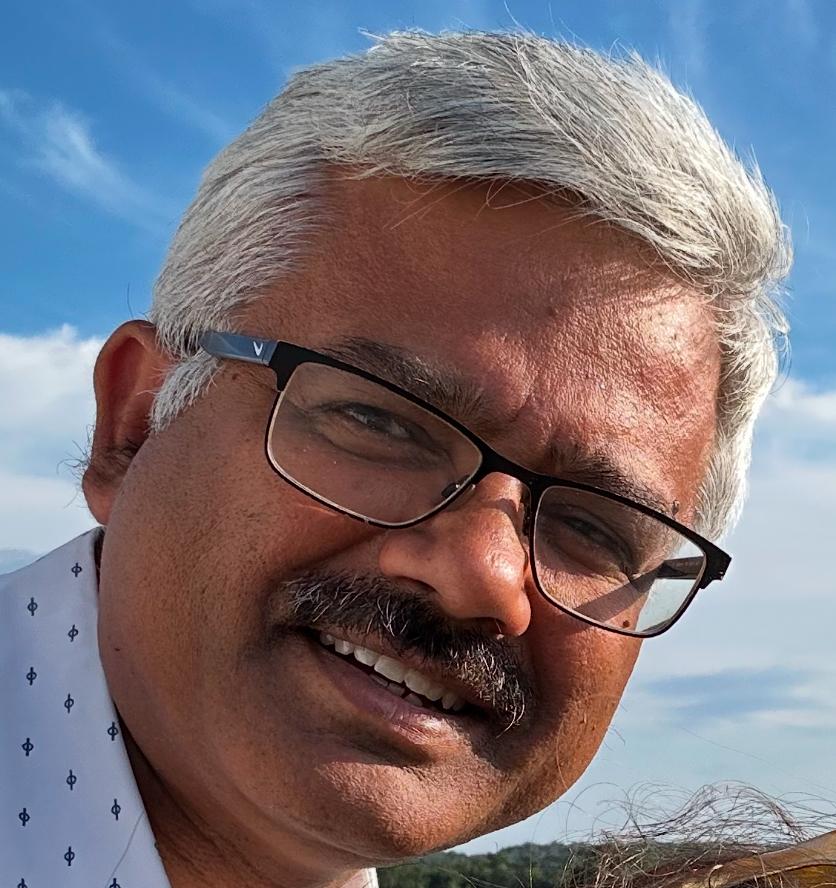The Bengal Files: Truths that were lost in time
A Conversation with Utsav Chakrabarti on The Bengal Files
.jpg) The Bengal files will release on Sept. 5 / The Bengal Files
The Bengal files will release on Sept. 5 / The Bengal Files
As The Bengal Files premiered to a packed theatre in Washington, D.C., emotions ran high. The film, directed by Vivek Agnihotri, confronts a dark and often overlooked chapter of South Asian history—the targeted persecution and massacre of Hindus in Bengal and present-day Bangladesh. Among those in attendance was Utsav Chakrabarti, Executive Director of Hindu Action, whose advocacy focuses on religious freedom and human rights.
In this candid conversation, Chakrabarti reflects on the emotional weight of the film, the historical accuracy behind its most heart-wrenching scenes, and the urgent need to confront ongoing atrocities. Speaking not just as an activist, but as a global citizen, he lays bare the human cost of forgotten history—and what it means for today.
Q: Utsav, you’ve just watched The Bengal Files. What stayed with you the most?
Utsav Chakrabarti: What really hit hard was the accuracy of it all. As melodramatic and tragic as the film appears on screen, it’s all historically true. Every horrifying moment—including that gut-wrenching scene with the child and the vulture—comes from documented sources, from archives and media reports. You sit in a theater and think, “this can’t be real,” but the most tragic part is—it is.
ALSO READ: Indian Americans moved and stirred by ‘The Bengal Files’ premiere in Washington, D.C.
Q: The film deals with events that are decades old. Do you see it as relevant today?
Absolutely. In fact, it’s more than relevant—it’s ongoing. The persecution depicted in the film hasn’t ended. It’s alive today, particularly in parts of Bengal and throughout Bangladesh. Take 1971 for instance—just 50 years ago, 3 million Hindus were killed by the Pakistan Army in Bangladesh. That trickle of bloodshed has never really stopped. Even last week, Hindus were attacked in Gogan, Bangladesh.
Q: What’s the current situation for Hindus in Bangladesh?
It’s dire. Since August 5th, 2024—after the regime change—the country has been slipping into the hands of radical Islamists. In the past year alone, over 500 temples have been destroyed. Hindu women are being kidnapped and forced into conversions. Young men are being told to convert if they want employment. And this is just what we know from places with internet access. In rural Bangladesh, it’s probably worse. People are being killed, villages emptied, and no one hears their voices. We're sitting here in Washington, D.C., trying to find ways to respond to what feels like a slow-moving genocide.
Q: Did the film raise questions for you?
Yes, it forces you to confront questions of humanity. Once you watch The Bengal Files, you can’t walk away untouched. It compels you to ask: what am I doing about this? What are we as global citizens doing about this? It’s a call to conscience.
Q: Do you think history could have taken a different course?
Hindsight is always 20/20. Looking back, yes, we now see where strategic mistakes were made. Even our so-called best leaders—ones revered in Indian history—made decisions that led to unimaginable consequences: mass killings, displacement, and reshaping of entire geographies. That said, I also acknowledge that we weren’t in their shoes. So while I criticize, I also grant them the benefit of doubt.
Q: Vivek Agnihotri has now made three 'Files' films. How do you see his evolution as a storyteller?
Vivek is fearless. He picks politically loaded topics, but approaches them like a historian or a documentarian—not a typical filmmaker. That’s what I really appreciate. Yes, there’s drama—it’s Bollywood after all—but he never lets that override the truth. In fact, his commitment to historical accuracy is what makes his work stand out. With Kashmir Files, people could remember what happened. But Bengal Files? It takes us back over 80 years to truths that were buried or deliberately ignored. That makes this film incredibly important.
Q: One last thought—what should audiences take away from this film?
Courage. And responsibility. It’s easy to be overwhelmed by the pain, but the film is a mirror. It’s asking us—what will you do now that you know?
ADVERTISEMENT
ADVERTISEMENT
E Paper
Video
_page-0001.jpg)

 Lalit K Jha
Lalit K Jha
.jpg)
.jpg)
.jpg)




.jpg)



Comments
Start the conversation
Become a member of New India Abroad to start commenting.
Sign Up Now
Already have an account? Login